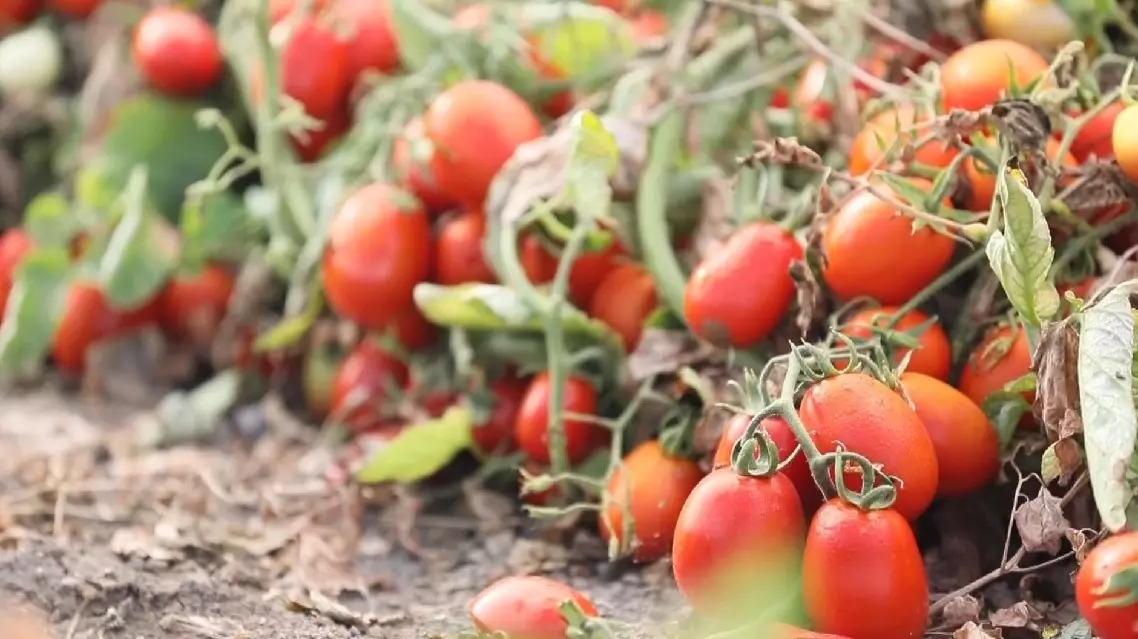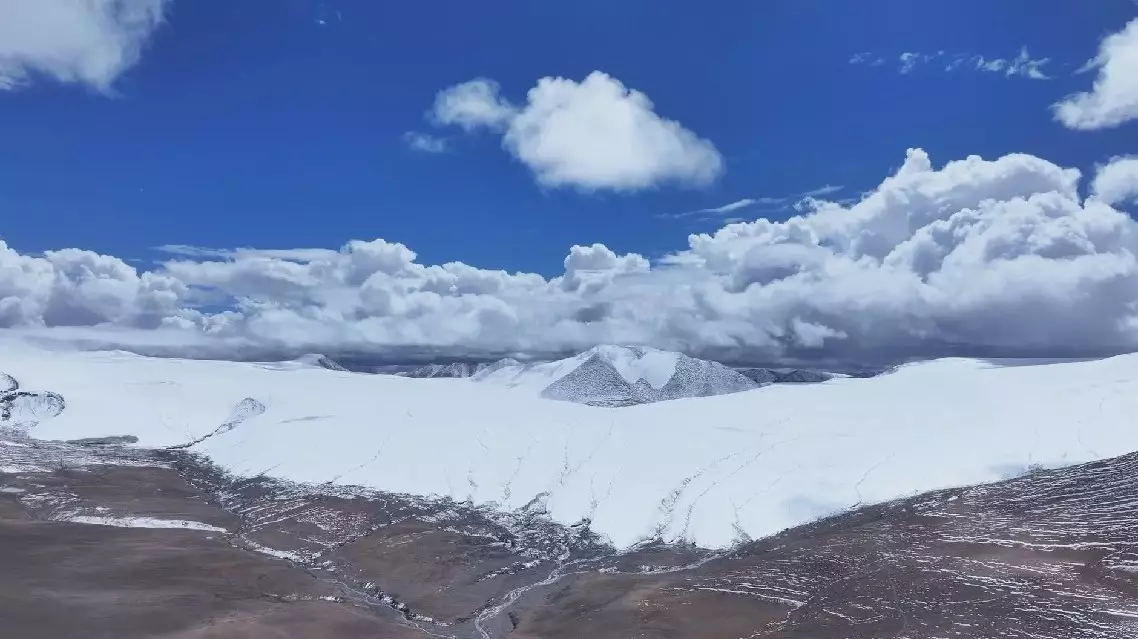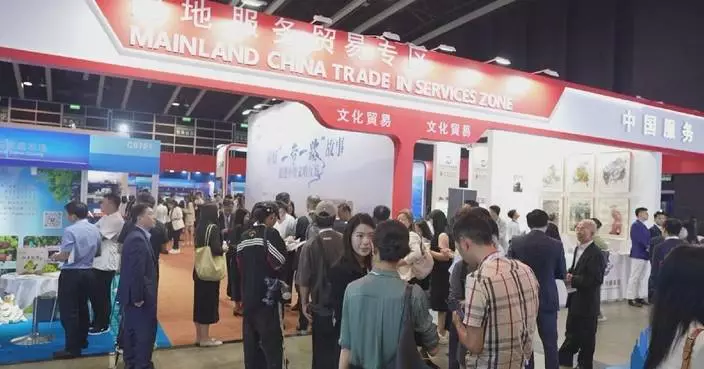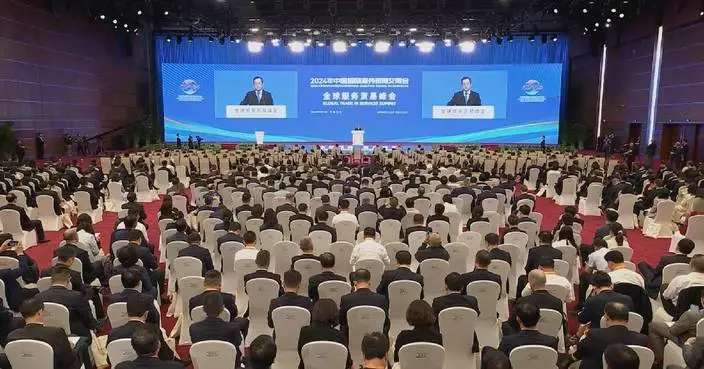The tomato industry in Xinjiang Uygur Autonomous Region, northwest China, has been reshaped by cutting-edge machinery and innovative business strategies.
Xinjiang, known as the "golden land" for tomatoes, boasts optimal growing conditions with abundant sunshine and sharp difference between day and night temperatures.
"The sun is abundant, so the lycopene content in tomatoes is higher. The soil here is rich in selenium and relatively fertile. Tomato production is expected to reach about 120 tons per hectare this year," said Zhao Ling, deputy director of the Bureau of Agriculture and Rural Affairs of Manas County.
Post-harvest processing is vital for tomatoes, the beloved vegetable on dining tables worldwide, to yield products like paste.
"High content and thick skin are the characteristics of processing tomatoes. The purpose is to reduce water loss during transportation and increase production," said Zhao.
Manas County in Changji Hui Autonomous Prefecture began the large-scale cultivation of tomatoes for processing in the 1990s, and embraced mechanized agriculture more than a decade ago. Today, smart machines can filter out low-quality tomatoes, and harvest 600 tons of quality produce a day.
From August to October, the 14,000 hectares of processing tomato crops in Manas County, or 40 percent of Xinjiang's total tomato cultivation area, are ripe for harvest.
The tomato cultivation is financially rewarding, according to local farmers.
"The income from tomatoes is better than from other vegetables, and large fields are easier to manage," said Chen Jianbing, a farmer.
Beyond advanced machinery, innovative business models have reshaped the industry.
Contract farming became predominant in Manas to help farmers hedge against the risk of fluctuations in tomato prices. Tomato paste companies confirm the amount and varieties of tomatoes in advance with the farmers, and provide technical consultations during the growing period of the crops to ensure product quality and production efficiency.
In Manas, the entire processing tomato industry is estimated to have an output value of 2.5 billion yuan, or more than 350 million U.S. dollars this year, which will improve the economic wellbeing of the locals.

Smart machinery, innovative business strategies transform Xinjiang's tomato industry
China's scientific expedition team on Thursday obtained critical ice cores during their investigation of the Qinghai-Xizang Plateau, which is known as Asia's "water tower".
The region encompasses "one glacier, two lakes and three rivers". It is home to Purog Kangri Glacier, the world's largest glacier in the mid to low-latitude regions, as well as Siling Lake and Namtso Lake, the largest and second-largest lakes in Xizang, respectively. It is also the birthplace of the Yangtze River, Nujiang River and Yarlung Zangbo River.
The climate in the region is complex and changeable, and its ecosystem is very fragile, and meanwhile it is a pivotal area for Xizang's economic and social development.
During their expedition, the team drilled for ice cores at different depths overnight on Thursday, aiming to capture climate records from different time scales.
Ice core drilling is typically conducted during the night and early morning when the ice temperature is sufficiently low.
Ice cores serve as vital records of global climate and environmental changes. The sediments and bubbles within these cores are clues to understanding the history of Earth's climate. By studying the bubbles captured in ice cores, scientists can analyze atmospheric composition, including carbon dioxide levels, over hundreds of thousands of years.
Yao Tandong, an academician at the Chinese Academy of Sciences (CAS) and leader of the expedition, and Lonnie Thompson, a renowned American glacier expert and foreign academician at CAS, conducted their scientific expedition on the glacier Thursday morning.
Through helicopter observations, thickness-measuring radar, satellite image comparison and other methods, the scientific expedition team has found that the surface area of the Purog Kangri Glacier has shrunk by 10 percent over the past 50 years.
The average altitude of Purog Kangri Glacier is 5,748 meters, with the highest point reaching 6,370 meters. Due to global warming, the glacier is melting rapidly.
"So does the melting of glacier surface -- the higher the altitudes, the less the ablation volume, while at lower altitudes, it accumulates and forms branch-like rivers on the ice surface. Currently, these branches extend up to altitudes of 6,000 meters," said Xu Baiqing, a research fellow of the Institute of Tibetan Plateau Research under the CAS.
Research indicates that the accelerated retreat of glaciers on the Qinghai-Xizang Plateau over the past 40 years reflects a broader trend, and the melting rate of the Purog Kangri Glacier is relatively slow compared to the overall situation of the plateau.
The temperature changes within the glacier also attributed to the great difficulty of drilling, said Xu.
"Due to climate warming, the temperature within the glacier has risen, which suggests that under the same backdrop of temperature variations, the ablation may show abrupt shift with accelerating growth," said Xu.
The expedition was launched on Aug 18, 2024 and is scheduled to continue until October.

Scientists obtain critical ice cores during expedition in Qinghai-Xizang Plateau










